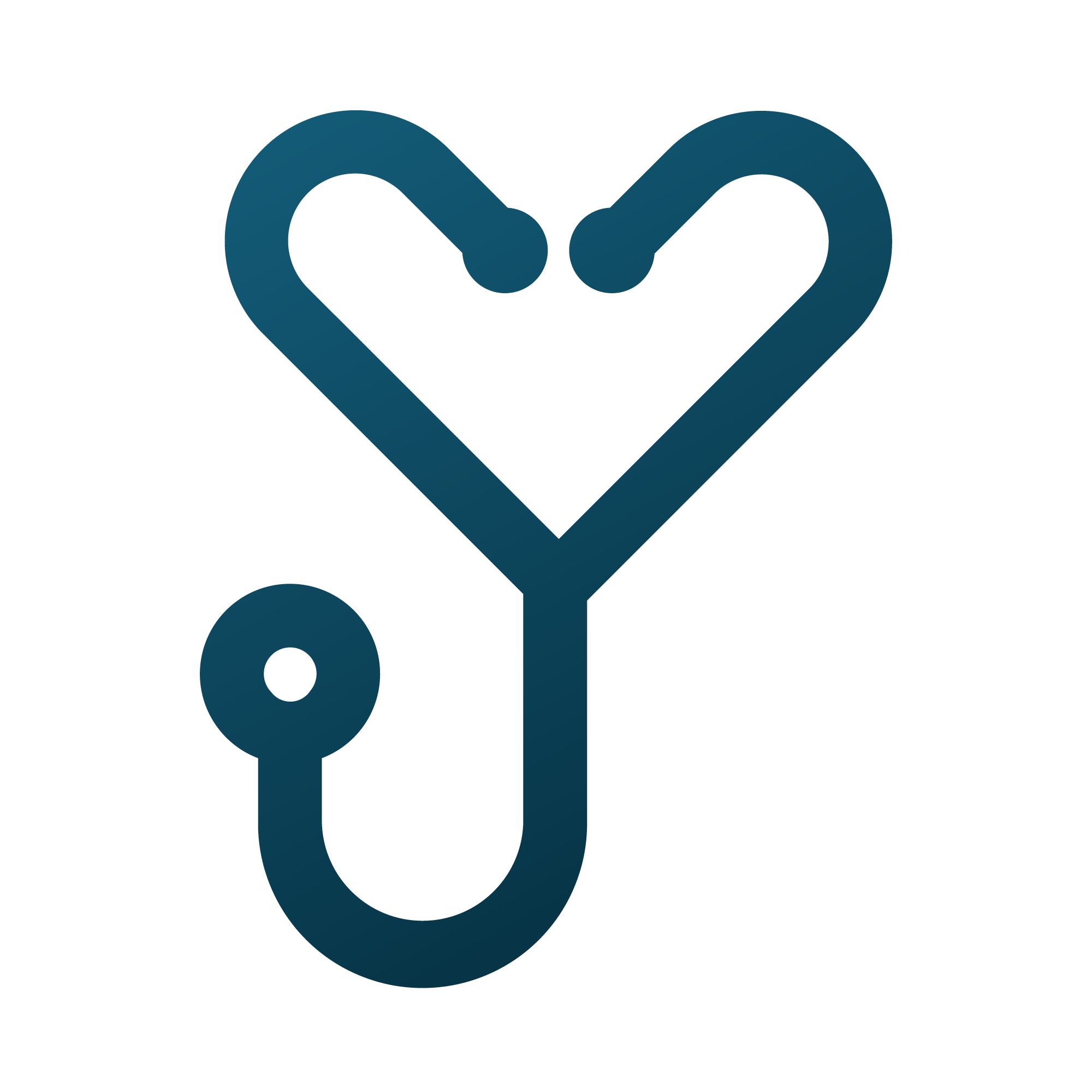Telemedicine Billing: GT, 95 & GQ Modifier Differences

The world of telemedicine has become increasingly important in recent years and telemedicine services are growing at a rapid pace, especially in the wake of a global pandemic. Not only has it become crucial to receive healthcare service from a distance, but it’s also the preference of many patients who wish to have healthcare visits from the comfort of their homes.

As more healthcare providers and patients turn to virtual health visits, providers must understand the correct billing practices and use appropriate modifiers on their claims. Specifically, for those practicing telemedicine, knowing how to use appropriate modifiers and CPT codes is essential for proper reimbursement.
While this might seem complex, in most cases, billing for telemedicine will look largely similar to billing for in-person healthcare services. The main difference is the need to add a modifier.
In this post, we’ll explore the main modifiers and codes associated with telehealth services. You’ll walk away understanding:
- The most commonly used modifiers for telehealth
- The difference between GT and 95 modifiers
- The difference between CPT and HCPCS code
- How to streamline digital telehealth billing
…
GT Modifiers: What Are They and Why Are They Important?
The two most commonly used modifiers are the GT modifier for telehealth service rendered via interactive audio and video telecommunications systems, and the 95 modifier for synchronous telemedicine service rendered via a real-time interactive audio and video communications system. Both modifiers help to distinguish a telehealth visit from an in-person office visit.
In terms of telemedicine services, GT modifiers identify and showcase that a virtual consultation took place between a healthcare provider and a patient. It is commonly used for codes like 99201-05, 99211-15, behavioral health codes, and other services that are medically appropriate for telemedicine. Note: The GT modifier is only allowed on institutional claims billed by CAH Method II providers.
The GT modifier is added to the CPT code, which is a standard numerical code used to describe medical procedures and services. By appending the GT modifier to the appropriate CPT code, healthcare providers can ensure that telemedicine services are properly documented and billed to the insurance company. This ensures accurate payment is made to telehealth providers for their services.
When to Use the GT Modifier
The GT modifier is typically used when a service would normally be provided in person but instead takes place remotely. This can be a useful option for patients unable or unwilling to travel to a healthcare facility or for providers who consult with patients who aren’t within close proximity to their office.
Some common scenarios in which the GT modifier might be used include virtual check-up appointments, remote consultations for ongoing medical care, and virtual messaging. It’s important to note that not all services are appropriate for telemedicine, and the decision to use the GT modifier should be carefully considered based on the specific needs of the patient and the type of care being provided.
Ultimately, the decision to use the GT modifier should be made by taking into consideration the guidelines and regulations set forth by the Centers for Medicare & Medicaid Services (CMS) and other relevant authorities. Providers should also ensure that they comply with any applicable state laws or regulations related to telemedicine.
What Is the Difference between GT and 95 Modifiers?
Modifier 95 was first introduced in January 2017, and it’s one of the newest additions to the telemedicine billing landscape. Per the AMA, modifier 95 means: “synchronous telemedicine service rendered via a real-time interactive audio and video telecommunications system.” It’s similar to GT in use cases, but unlike GT there are limits to the codes that it can be appended.
Modifier 95 is only for codes that are listed in Appendix P of the CPT manual. There is considerable overlap between situations for using GT and 95. Codes listed in Appendix P are likely to fall under the following categories:
- Psychiatric and behavioral health treatment
- Nutrition
- Genetic counseling and evaluation
- Some remote ophthalmologic services
- Office and outpatient services
- Some inpatient consults
- Nursing facility evaluations and prolonged monitoring services
The specific codes include:
- Consults- 99241-45
- E/M For Established Patients- 99211-15
- New Patient Evaluation and E/M- 99201-05
- Most behavioral health codes
Additionally, Medicaid requires 95 and no longer accepts GT.
Additional Common Telehealth Modifiers
A few additional modifiers that may be appended to telehealth services include:
Modifier 93
Modifier 93 is a synchronous telemedicine service via telephone or other real-time interactive audio-only telecommunications system. Synchronous telemedicine service is defined as a real-time interaction between a physician or other qualified health care professional and a patient located away at a distant site from the physician or other qualified health care professional. Note: This modifier should only be used by Opioid Treatment Programs (OTPs), Rural Health Clinics (RHCs), and Federally Qualified Health Centers (FQHCs).
Modifier G0
Modifier G0 telehealth service provided for purposes of diagnosis, evaluation, or treatment of symptoms of an acute stroke. Modifier G0 is used to indicate a service provided outside of a geographic location (such as a telehealth appointment).
Modifier GQ
Modifier GQ is a telehealth service rendered via an asynchronous telecommunications system. Asynchronous telemedicine means that medical care is provided via image and video but not in real-time. For example, a patient may undergo a service recorded as a video or captured as an image, and the provider evaluates it later.
Modifier FQ
Modifier FQ indicates a service or procedure was provided as part of a federally qualified health center (FQHC) or rural health clinic (RHC) visit. This modifier helps ensure accurate and appropriate reimbursement for services performed at these specific designated healthcare facilities.
As with any service billed, healthcare providers need to check the billing and coding guidelines of the specific payer they are working with to ensure accurate and timely reimbursement as well as minimize claim denials.
Guide to CPT Codes for Telemedicine
Now that we understand the importance of modifiers, let’s further explore the various CPT codes relevant to virtual medical services.
1. E-Visits
E-visits are digital, remote communications between a healthcare provider and a patient. They typically involve the exchange of information via a patient portal or secure messaging, such as asking a non-urgent question related to a health concern. CPT codes 99421-99423 are used to report e-visits, depending on the amount of time spent on the communication.
2. Virtual Check-Ins
Virtual check-ins are typically short, patient-initiated communications with a healthcare provider, usually conducted by phone or other real-time technology that allows for audio/video capabilities. CPT codes 99421-99423 are also used to report virtual check-ins, again based on the length of the communication.
3. Telephone Evaluation and Management Services
Telephone evaluation and management (E/M) services involve a healthcare provider conducting a comprehensive patient assessment and providing medical advice over the phone. CPT codes 99441-99443 are used to report these services, depending on the complexity and nature of the service provided.
4. Online Digital Evaluation and Management Services
Online digital E/M services are similar to telephone E/M services, but the communication occurs through secure online platforms. CPT codes 99421-99423 can be used to report these services, depending on the duration and complexity of the consultation.
5. Telehealth Services
Telehealth encompasses a wide range of services including consultations and treatments provided via interactive audio and video systems. These services may include initial consultations, follow-up visits, and remote monitoring. CPT codes 99201-99499, along with the appropriate GT modifier, are used to report these varying telehealth services.
It’s important to note that these codes and modifiers are subject to change, so it’s important to stay updated and informed with the latest guidelines issued by insurance companies to ensure your healthcare practices stay current for timely payment.
What is the purpose of HCPCS and how does HCPCS differ from CPT codes?
Created by the Centers for Medicare and Medicaid Services (CMS), HCPCS codes differ from CPT codes in that they cover a wide range of healthcare services, including procedures, supplies, and equipment. HCPCS codes are used by Medicare and other payers to identify and reimburse for these various services.
HCPCS codes are structured by two different levels. Level I codes are identical to CPT codes and represent healthcare procedures and services. HCPCS Level II codes, also known as “HCPCS modifiers” or “HCPCS S codes,” cover supplies, durable medical equipment, and other non-physician-related services.
While Level I (CPT) codes are universally accepted, Level II codes are often used by government payers, such as Medicare and Medicaid.
In essence, CPT codes are a subset of HCPCS codes (specifically, Level I of HCPCS), and although they overlap in many areas, they serve different purposes. It’s vital to understand both coding systems and their distinct nuances for accurate billing and reimbursement.
Are You Ready to Get Telemedicine Billing?
Having a comprehensive understanding of the key telemedicine billing modifiers and codes is only the first step for reimbursement. Next, you’ll want a collaborative partner capable of streamlining the complexities of telemedicine billing, simplifying both the technology and implementation processes. That’s what the best telemedicine companies like Mend can do. If you’re ready to get started, request a demo to maximize efficiency and improve your billing processes today!
Keyword:
Find a Topic:
Recent Posts
- Compassionate Foundations: Self-Care for Mental Health Providers
- Behavioral Health News: Mend Partners with Leading Community Mental Health Organizations to Reduce No-Shows and Increase Access to Care
- Understanding SAMHSA’s Key Changes to 42 CFR Part 8: A Guide for Healthcare Professionals
- Becoming a CCBHC: Staffing Requirements
- Empowering Change: SAMHSA’s Impact on Behavioral Health Through Grant Funding, Innovation, and Collaboration



